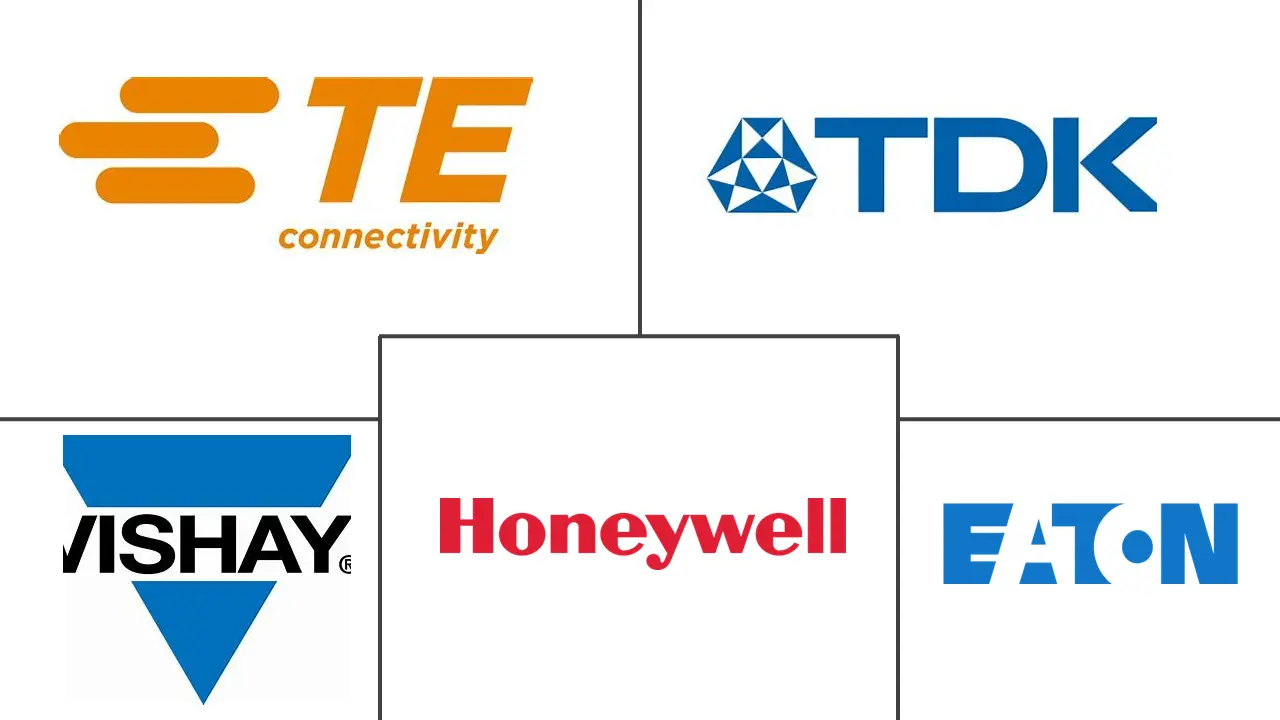Size and Share of Passive Electronic Components Market In Oil & Gas Industry
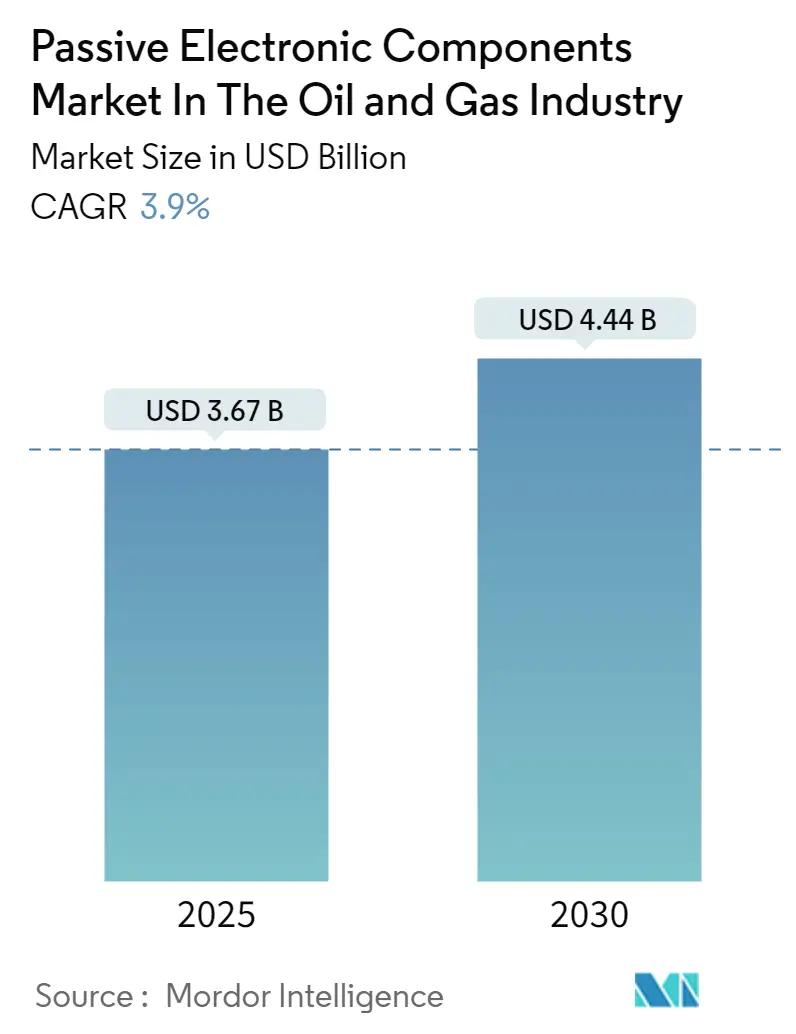
Analysis of Passive Electronic Components Market In Oil & Gas Industry by Mordor Intelligence
The Passive Electronic Components Market In The Oil & Gas Industry is expected to grow from USD 3.67 billion in 2025 to USD 4.44 billion by 2030, at a CAGR of 3.9% during the forecast period (2025-2030).
The oil and gas industry has a high demand for passive electronic components as electronic components used in this market must withstand high vibration frequencies at high temperatures and voltages.
- The passive components are able to perform in harsher environments, with extreme temperatures, vibration ratings, dust, liquid resistance specifications, etc. The oil & gas industry requires high-temperature capacity components that can resist temperatures exceeding 392°F. Passive electronic components in the oil & gas industry find application in downhole sensors, downhole logging tools, downhole pumping electronics, and others.
- Furthermore, passive electronic components offer high-end benefits to the oil & gas industry, such as stable and predictable capacitance, increased tool reliability and reduced risk of unexpected failure, shock and vibration, system design complexity, and improved installations. With the rising oil exploration and production activities across the globe, along with the integration of high-tech equipment and electronic components, the demand for passive electronic components has increased.
- The oil and gas industry is expected to witness steady growth in the coming years, owing to plans for its development. The industry is adopting automation in multiple processes due to these cost-cutting activities. The increasing use of IoT and automation in the industry to improve production, optimize equipment, and monitor remote areas, has fueled the market growth. IoT solutions and automation allow oil & gas facilities to gain detailed visibility into their process or equipment and increase efficiencies.
- Moreover, the regional government's fuel subsidies and lower oil prices further fuel the demand for oil and gas consumption by various end-use industries, creating new growth opportunities for the studied market. For instance, the Abu Dhabi National Oil Company or ADNOC, a state-owned oil company of the United Arab Emirates, announced its plans to add a third refinery to the complex as part of a USD 45 billion downstream development investment to develop flexibility in refining and processing other grades. The new refinery will have a capacity of 600,000 b/d, offering the entire complex a total capacity of 1.5 million barrels per day, making it the world.
Insights and Trends of Passive Electronic Components Market In Oil & Gas Industry
Increasing Invesment in Oil & Gas Industry
- The passive electronic component market witnessed high demand in the oil & gas industry during the forecast period. The growth is attributed to increasing investments by oil & gas companies, regional governments, and other industry players to meet the growing demand.
- In August 2022, Santos, an Australian-based company, announced to invest USD 1.3 billion into developing a major oil field on Alaska's North Slope. The company has also acquired Oil Search of Papua New Guinea to advance the project. The company aims to produce 80,000 barrels of oil daily and is expected to begin flowing in 2026.
- According to IBEF, in March 2022, the Board of Oil India approved an investment of USD 839.49 million for the Numaligarhpetrochemical project. Further, in March 2022, the Board of IOCL approved plans to invest USD 932.6 million) For developing the City Gas Distribution (CGD) network in 9 geographical areas (GAs).
- Further, in December 2022, Gazprom, a Russian company, announced the production of 412.6 billion cubic meters of natural gas increase compared to the previous month, which was recorded at 376.9 billion cubic meters.
- Additionally, the industry has many ongoing and upcoming projects, with huge investments toward expanding production. For instance, the West Path Delivery 2023 project is expected to add about 40 km of new natural gas pipeline to the existing 25,000-km NGTL system, which ships gas across the U.S. and Canadian markets. Such projects are expected to continue during the forecast period, fueling the demand for passive electronic components.
- Moreover, several industry players are also investing in the oil & gas industry to gain a competitive edge in the market. For instance, in March 2022, Sinopec, a China Petroleum & Chemical Corporation, announced investing 81.5 billion yen in upstream exploitation, crude oil bases in Tahe and Shunbei, and natural gas fields in Sichuan province and the Inner Mongolia region.
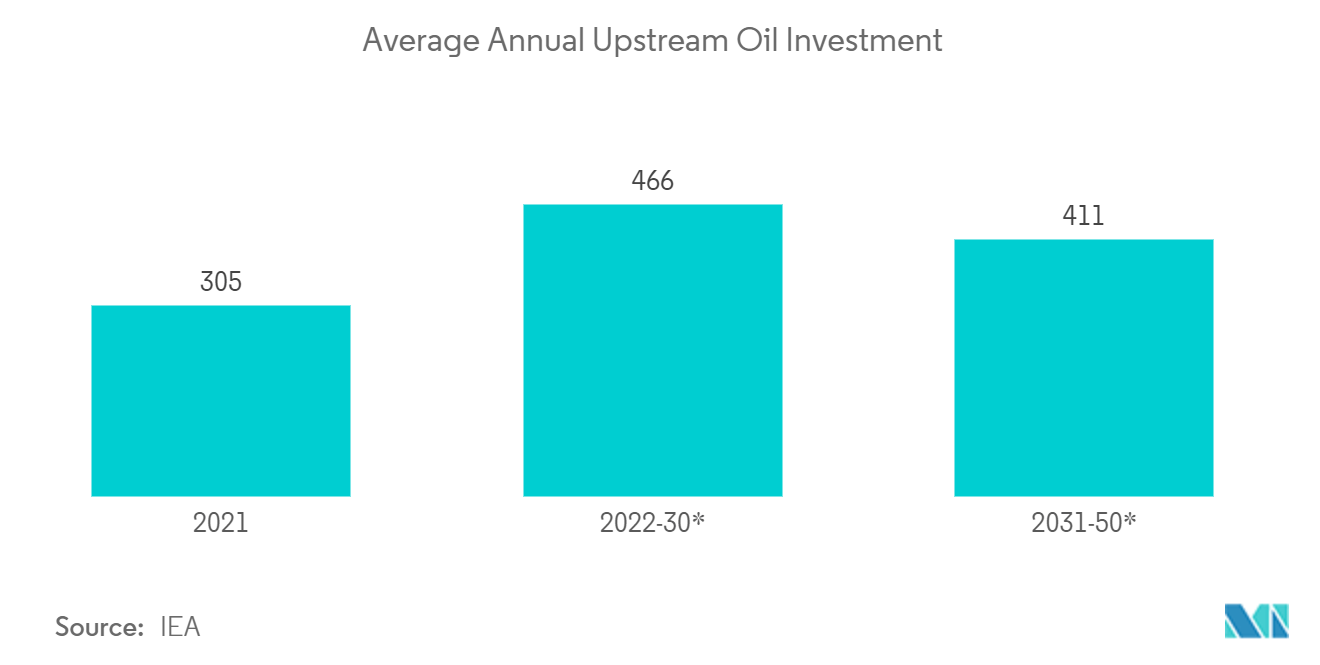
MEA Region to Hold a Significant Market Share
- The Middle East region is one of the most significant regions for the world's oil & gas sector. The country's economy primarily depends on the oil and gas sector for revenues. The oil and gas sector has been undergoing many innovations, such as automation and IoT. Therefore, such trends are expected to create considerable demand for inductors in the region, owing to the incorporation of automation technologies.
- According to International Trade Administration, Saudi Arabia possesses around 17% of the world's petroleum reserves and ranks among the largest exporters of petroleum and ranks second largest proven oil reserves in the world. Strong success in the oil & gas industry resulted in the country's economic development.
- Saudi Arabia has witnessed an increase in interest and opportunities for the renewable segment and investing heavily in technologies to produce hydrogen environmentally, including green hydrogen and blue hydrogen. For instance, the country has taken several initiatives focused on the environment, such as the Middle East Green Initiative and Saudi Green Initiative, which further aim to become net carbon neutral by 2060. Such regional initiatives will create high demand for passive electronic components during the projected timeline.
- The UAE's oil and natural gas reserves have grown, according to the Abu Dhabi National Oil Company, which has unveiled a USD 127 billion capital investment plan for 2022-2026. According to the state-owned firm, natural resource reserves have increased by 16 trillion standard cubic feet of natural gas and 4 billion stock tank barrels of oil, bringing the total to 111 billion stand 289 trillion scf.
- The MEA region's oil and gas industry remains the most active and optimistic sector and is likely to continue to play a leading role. The industry also includes the most significant export and investment opportunities for foreign countries over the past years.
- Furthermore, the increase in the upcoming large-scale oil & gas development and infrastructure projects across the MEA region will drive the demand for passive electronic components in the oil & gas industry.
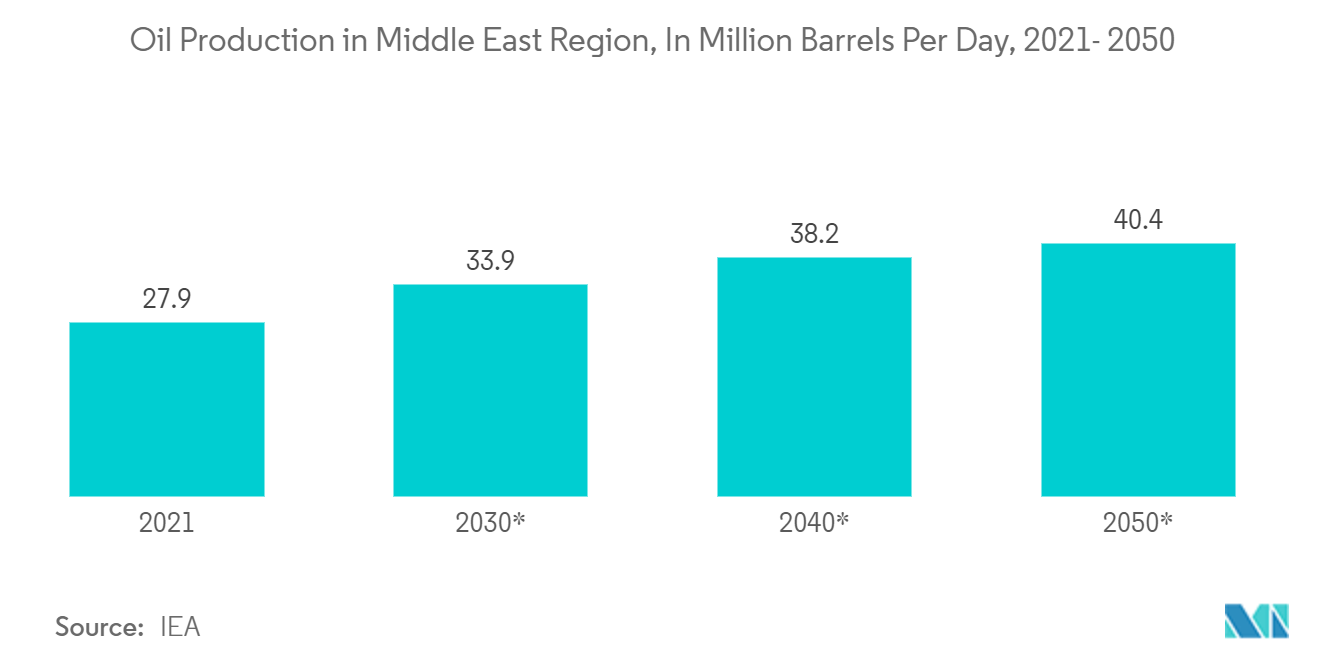
Competitive Landscape
The competitive landscape of the global passive electronic components market is moderately consolidated due to several market players globally. The market players are making several product developments and innovations to capture the maximum market share. Moreover, the market players are considering strategic partnerships and investments to gain maximum market traction.
In April 2023, Kyocera Corporation announced to development of a new capacitor (MLCC) with EIA 0201 size and the industry's highest capacitance of 10 microfarads. Through this launch, the company aims to meet recent market trends and make unique societal benefits possible through IoT and wireless communications technology.
In July 2022, TDK Corporation announced the launching of a CLT32 series power inductor with highly compact dimensions. The nine types cover an inductance range of 17 nH to 440 nH and are designed for 13.5A to 60A saturation currents. These inductors are constructed for a temperature range of -40 °C to 165 °C, including self-healing.
Leaders of Passive Electronic Components Market In Oil & Gas Industry
TE Connectivity
Eaton Corporation
Vishay Intertechnology Inc.
Honeywell International Inc.
TDK Corporation
- *Disclaimer: Major Players sorted in no particular order
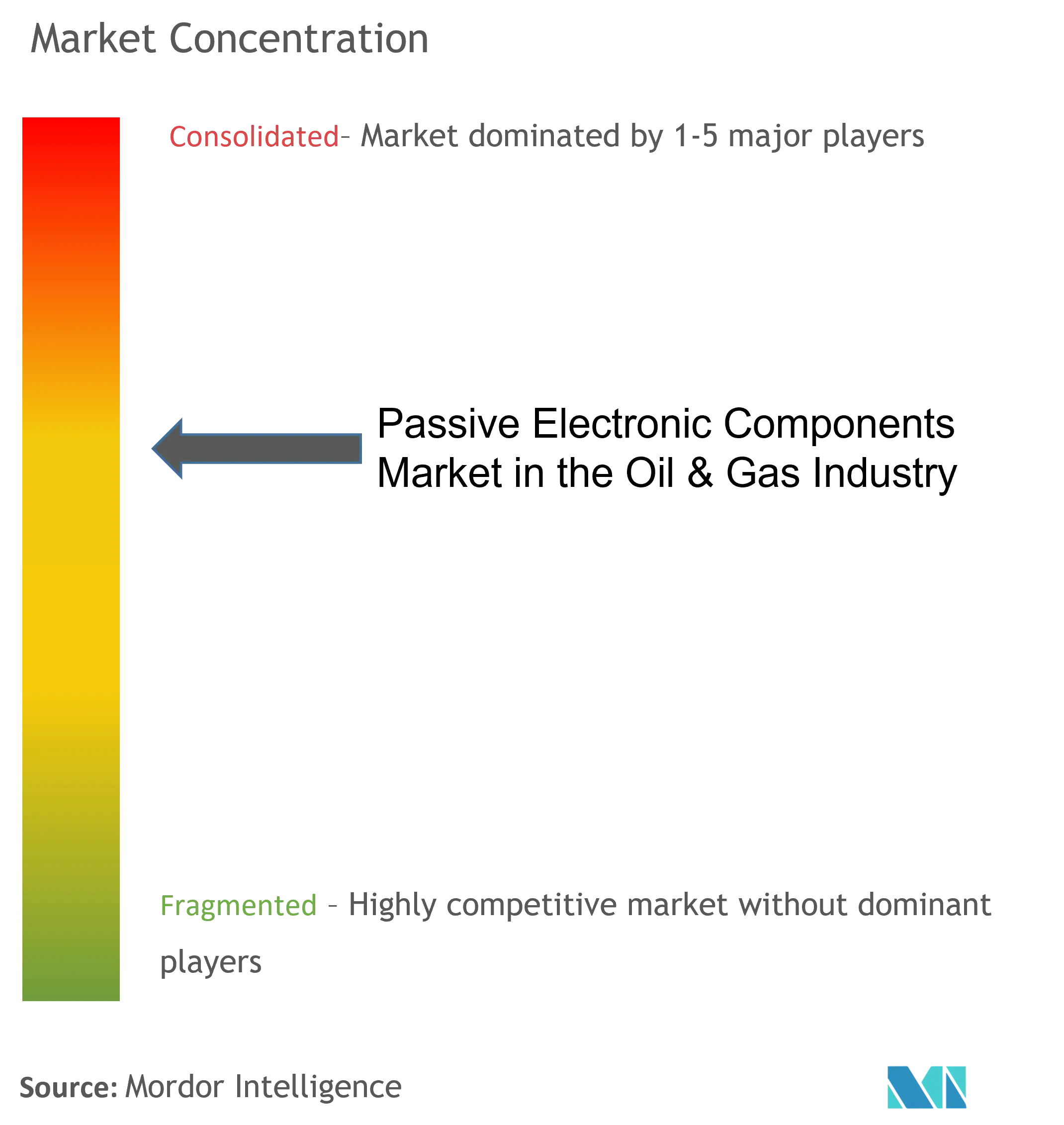
Recent Industry Developments
- March 2023: Cornell Dubilier Electronics Inc. introduces the 944L series of low inductance, high current DC link film capacitors. The series uses large diameter non-inductive windings and low inductance internal bus connections resulting in equivalent series inductance (ESL) values in the 10 to 15 nano henry range. It is also available in values from 33 to 220uF with voltage ratings of 800, 1000, 1200, and 1400VDC.
- September 2022: TT Electronics announced the launch of the TFHP series thin film high-power chip resistors. Combining high precision and high performance in one resistor, the TFHP series uses an aluminum nitride (AIN) ceramic substrate that has approximately six times the conductivity of aluminum oxide, the substrate material of conventional chip resistors.
Scope of Report on Passive Electronic Components Market In Oil & Gas Industry
Passive electronic components are those whose current cannot be controlled via another electrical signal. The passive electronic component, such as an inductor, capacitor, resistor, etc., do not require any electricity source to function. They use some other property to control the power in the circuit.
The scope of the study characterizes the global passive electronic components market based on inductors, resistors, and capacitors across various geographies. The market sizes and forecasts are provided in terms of value (USD) for all the above segments.
| Capacitor |
| Inductor |
| Resistor |
| North America |
| Europe |
| Asia |
| Australia and New Zealand |
| Type | Capacitor |
| Inductor | |
| Resistor | |
| Geography | North America |
| Europe | |
| Asia | |
| Australia and New Zealand |
Key Questions Answered in the Report
How big is the Passive Electronic Components Market in the Oil & Gas Industry?
The Passive Electronic Components Market in the Oil & Gas Industry size is expected to reach USD 3.67 billion in 2025 and grow at a CAGR of 3.9% to reach USD 4.44 billion by 2030.
What is the current Passive Electronic Components Market in the Oil & Gas Industry size?
In 2025, the Passive Electronic Components Market in the Oil & Gas Industry size is expected to reach USD 3.67 billion.
Who are the key players in Passive Electronic Components Market in the Oil & Gas Industry?
TE Connectivity, Eaton Corporation, Vishay Intertechnology Inc., Honeywell International Inc. and TDK Corporation are the major companies operating in the Passive Electronic Components Market in the Oil & Gas Industry.
Which is the fastest growing region in Passive Electronic Components Market in the Oil & Gas Industry?
Asia Pacific is estimated to grow at the highest CAGR over the forecast period (2025-2030).
Which region has the biggest share in Passive Electronic Components Market in the Oil & Gas Industry?
In 2025, the North America accounts for the largest market share in Passive Electronic Components Market in the Oil & Gas Industry.
What years does this Passive Electronic Components Market in the Oil & Gas Industry cover, and what was the market size in 2024?
In 2024, the Passive Electronic Components Market in the Oil & Gas Industry size was estimated at USD 3.53 billion. The report covers the Passive Electronic Components Market in the Oil & Gas Industry historical market size for years: 2021, 2022, 2023 and 2024. The report also forecasts the Passive Electronic Components Market in the Oil & Gas Industry size for years: 2025, 2026, 2027, 2028, 2029 and 2030.
Page last updated on:
Report on Passive Electronic Components Market In Oil & Gas Industry
Statistics for the 2025 Passive Electronic Components In The Oil & Gas Industry market share, size and revenue growth rate, created by Mordor Intelligence™ Industry Reports. Passive Electronic Components In The Oil & Gas Industry analysis includes a market forecast outlook for 2025 to 2030 and historical overview. Get a sample of this industry analysis as a free report PDF download.
